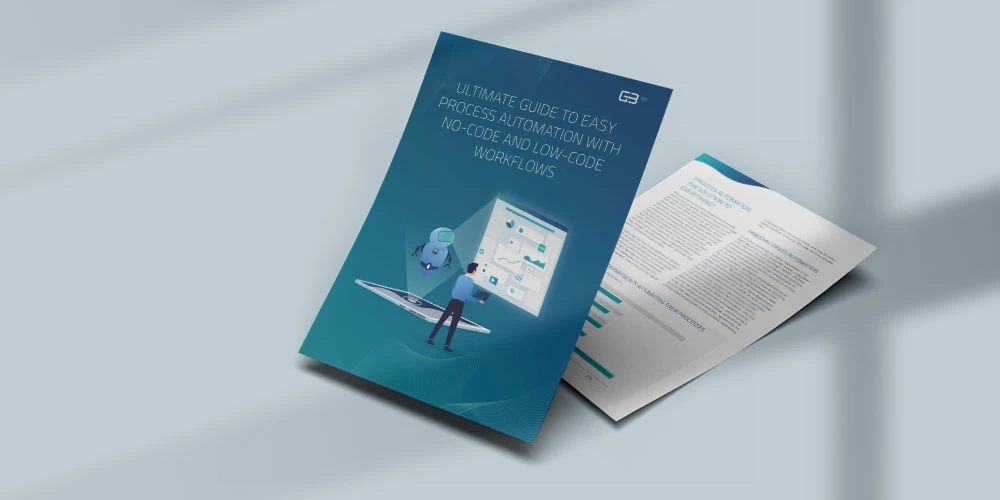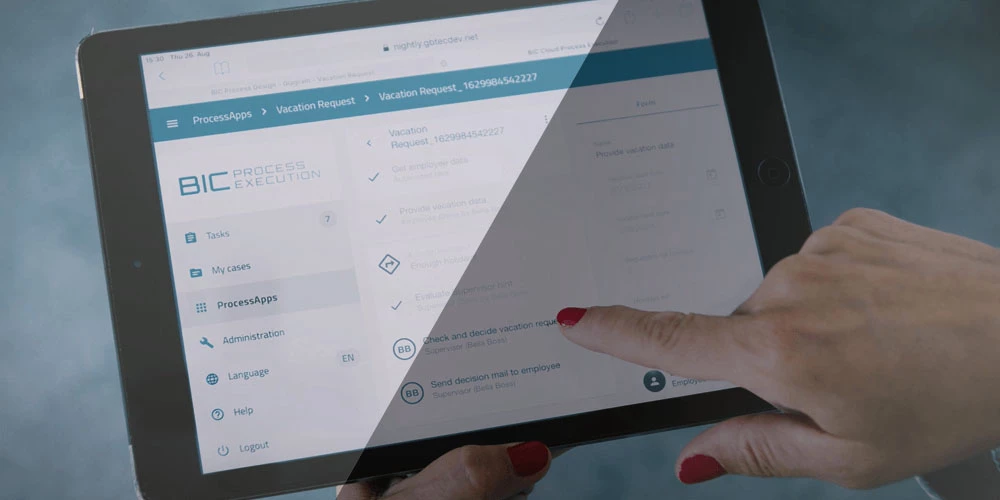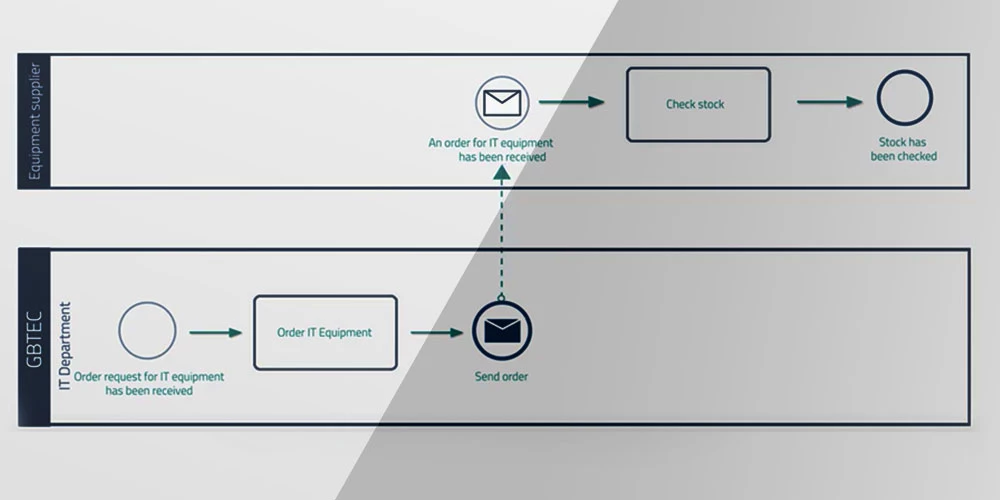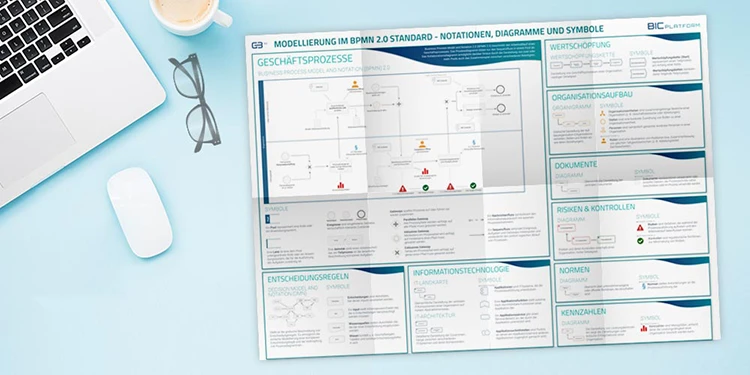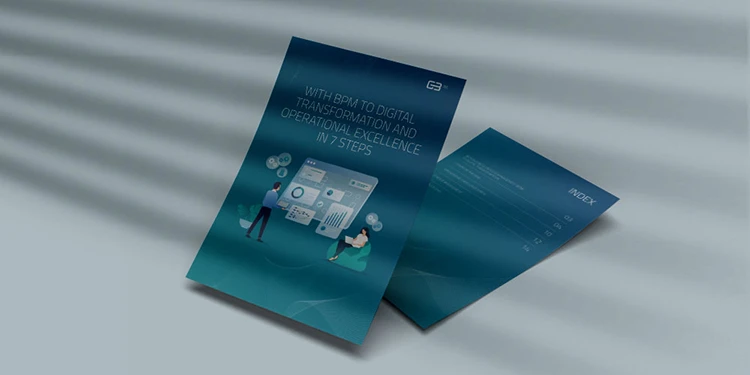How Process Management Drives Digital Transformation in Companies
In the age of digitalization, companies are faced with the challenge of reimagining traditional business processes in innovative ways. However, this transformation requires more than just the implementation of new digital tools. Through systematic analysis, redesign, and automation of workflows, process management paves the way for a seamless integration of modern technologies, thus propelling the digital transformation forward.

Companies in the age of digitalization
Industry 4.0, Robotic Process Automation, Blockchain, Data Science, Artificial Intelligence - the possibilities of digitalization are virtually limitless, especially for the economy. Successful businesses have realized that maintaining competitiveness requires a digital transformation – regardless of company size and industry: Because what worked in the past is no longer sufficient to keep up with the competition today. Everything happens faster, customer and market demands are increasingly complex, and efficiency is more important than ever. The COVID-19 pandemic has accelerated this change, forcing companies to propel digitalization even faster.

What does digitalization mean and what's the difference from digital transformation?
Digitalization - a buzzword you've probably come across in your professional life quite a few times. But what does it actually mean? And what significance does it hold for businesses? Here's a brief explanation: Digitalization refers to the process of converting physical or analog information, processes, work methods, and business models into digital formats and technologies. Often, the terms digital transformation and digitalization are used interchangeably in everyday language. However, digital transformation goes beyond just the digitization of analog information, data, and processes. It describes a profound and strategic change that companies undergo through the use of digital technologies and new business models to adapt to the challenges of the digital era. Digital transformation doesn't just affect the technological level, but also the company culture, working methods, and customer orientation. It encompasses the entire company - with the aim of making it future-proof and unlocking new growth opportunities.
Digitalization and Process Management - How do they fit together?
Before companies can embark on the digitalization of their business processes, there must first be a fundamental prerequisite - a well-functioning process management. Without a solid foundation, the electronic, paperless way of working cannot succeed. At the same time, it holds true that digitizing or even automating a poorly designed analog process doesn't inherently make the process meaningful. Therefore, it's worthwhile to critically examine and revise one's own processes beforehand. The digitalization of business processes entails more than just transferring them into an IT system; it also involves a shift in working methods. Processes shouldn't simply become forgotten relics, but rather, they need to be embraced and lived by employees. If the digitalization of operational workflows is successful, companies stand to benefit in various ways:

Increased agility
Digital transformation demands agility and swift responsiveness to shifting market conditions and customer demands. With BPM, you establish the necessary prerequisites to consistently, swiftly, and efficiently review and adapt your business processes.

Optimized and automated processes
With BPM, companies can map out their processes from start to finish, thereby identifying and eliminating inefficiencies, errors, and redundancies in existing business operations. Simultaneously, manual, time-consuming, and repetitive tasks become visible – ideal candidates for process automation.

Data-based decisions
Data is the lifeblood of every business. Utilizing an advanced BPM tool, you gain valuable insights into metrics such as average lead times, workloads, capacities, and process costs. These insights aid in strategic decision-making and formulating the digital strategy for businesses.

Improved collaboration and communication
BPM provides a central hub for collaboration and communication among different teams and departments. Through cross-departmental process understanding, silos can be dismantled, promoting a more efficient way of working.

Satisfied customers
By aiming to make processes customer-centric and ensuring that processes run faster and smoother for customers, process management plays a key role in improving the customer experience. A positive customer experience consequently binds customers to the company and promotes positive recommendations.

More opportunities for innovation
Digital process management creates room for innovations, as it relieves employees from time-consuming tasks and provides them with more space for creative thinking and new ideas. Innovations, in turn, create opportunities for business growth, whether through tapping into new markets, introducing new products, or developing new business models.
Good to know!
For a successful implementation, it is crucial to view digitalization comprehensively and as part of the entire corporate strategy. This leads to the understanding that digitalization is a cross-cutting theme that should be broadly embraced within the company and not solely handled by the IT department. Nevertheless, the IT department can provide support in selecting digital technologies for process collection, analysis, and documentation, and can demonstrate how these align with the existing system landscape and strategy. Additionally, they can advise on the automation possibilities and interfaces that need to be addressed in order to fully unleash the technical potential of BPM.
5 Steps to Successful Process Digitalization
One thing is clear: Digitizing your process management doesn't happen overnight; it requires numerous strategic and operational considerations and preparations. The following 5-step plan aims to provide you with guidance to maximize the full potential of your digitalization initiative:

Step 1: Strategic alignment
A clear strategy and vision form the foundation of a successful digitalization initiative. Hence, companies should define clear objectives in advance and align their transformation processes with these goals. At the outset, you should gain an overview of your existing process landscape and ascertain the following: What company processes do we have, and how are they structured? How are processes defined and coordinated across different departments and teams? Who is involved in these processes, and how much time do individual process steps take?
Step 2: Process documentation
The next step involves documenting the current-state processes with internal or external process owners. Often, this is done through moderated workshops or structured interviews, during which various aspects are developed, including the individual process steps, the involved employees, documents, and IT systems. This process also includes capturing key inputs and outputs, as well as potential disruptions and areas for improvement.


Step 3: Process optimization
Following this analysis of weaknesses in the current processes, the definition of the desired-state processes takes place. For this purpose, the existing processes are corrected for errors, inefficiencies, and redundancies under the following considerations: removal, simplification, or automation. "Do we even need the process or specific process steps? Can we simplify the process or specific process steps? Is it possible to (partially) automate the process?" Companies should grapple with these questions during process optimization and find corresponding answers.
Step 4: Process modeling
Subsequently, the new defined processes are documented digitally using a process modeling tool. All process-relevant information such as tasks, documents, responsibilities, and workflows can be captured digitally in one central place and accessed regardless of location. The documentation of processes can be done in various modeling languages. Common notations include BPMN 2.0 or EPK. By representing complex process models using suitable software, these can be visualized in an understandable, straightforward, and intuitive manner for all stakeholders. This gives you a 360-degree view of your processes and allows you to communicate them easily and comprehensibly throughout the entire organization.


Step 5: Process automation
In the ideal scenario, the optimized processes can ultimately be (partially) automated, resulting in a significant acceleration. With the aid of an automation tool, you transform your manual, paper-based, and repetitive tasks into digital forms, executable workflows, and tasks automated by bots – all in a short span of time. So-called no-code and low-code workflows assist in quickly creating digital workflows with minimal to no coding required. This allows non-technical users in departments, who are often most familiar with their own workflows, to create and flexibly adjust their processes without significant assistance from the IT department.
Mastering Process Digitalization: Best Practices from Companies

Keep the big picture in mind
Successful enterprise digitalization also requires a holistic view of your corporate processes. Therefore, don't just focus on individual processes or process steps, but consider the entire process landscape - including all dependencies and interfaces. This is the only way to identify process gaps, duplicated efforts, and disparate working methods. A comprehensive process map helps you maintain an overview while providing insights for standardization and simplification.

Take one step at a time
Don't dive headfirst into your digitalization initiative. Instead, define in advance where you're headed and how your business process management, from both a strategic and operational perspective, should look in the future. It's important to involve all stakeholders and decision-makers who are involved in the processes in the planning and implementation of the BPM strategy. This not only fosters the motivation of all involved parties but also helps you identify and prevent potential issues in advance. Additionally, an iterative approach is recommended: Use a gradual method, starting with small, manageable projects, and gradually expand to more complex processes.

Get your employees on board
Don't leave your employees alone with the new processes and tools. All these changes might seem very intimidating and overwhelming to many employees at first. Inform them about the changes, their reasons, and the benefits to alleviate their concerns. This way, you promote understanding on the employees' side and a greater willingness to embrace the changes. Provide them with training and ongoing support, even beyond the initial training sessions. Foster a culture of continuous improvement and encourage your employees to suggest and implement process enhancements.

Establish clear process accountabilities
Today's market demands rapid adaptability from businesses. To ensure this, decision-making authority and responsibilities must also align with processes and be structured to allow swift changes through short decision paths. Therefore, precisely define process accountabilities for each process and appoint dedicated process owners equipped with the necessary digital skills. Keep in mind that digitalization occurs at the process level, leading to a shift in responsibilities towards processes and away from isolated departments.

Keep an eye on your process metrics
Implementing process management is just the beginning, as BPM is not a one-time event but a continuous procedure. What works today might be outdated tomorrow. Continuously measure and monitor the success of the BPM strategy and use this information to make further improvements and adjustments to your processes. Through ongoing measurement and improvement of processes, their performance can be consistently maintained and potentially enhanced (process effectiveness), while simultaneously reducing process costs (process efficiency). Regularly review your processes for outdated or unnecessary process steps.

By the way
While (almost) every business process can be digitized, not every process is equally suitable for digitalization. Core processes that directly contribute to value creation, as well as administrative and standardized processes that are frequently repeated, are best suited for this purpose. These processes can originate from various areas and include tasks such as digitizing invoicing, orders, or approvals.

Now it's your turn
No matter how diverse the processes of each company may be, the digitization of existing workflows always requires a well-founded, professional business process management. With BIC Platform, GBTEC provides you with the ideal planning tool to effectively implement your digitalization project. The potentials of digitization can be easily identified and assessed using the software.
Embrace professional process management and drive the digital transformation in your company!
Those who confront the challenges of digitalization and view changes as opportunities set the stage for a successful future. With an innovative process management software, you can digitize and automate your organizational structures and workflows, thus laying the foundation for digital transformation.

Process Modeling with
BIC Process Design
Our innovative BPM tool BIC Process Design ensures more transpareny and smooth work processes. Find out how easy it can be to model your processes, give access to them company-wide and jointly optimize workflows.

Process Automation with
BIC Process Execution
Get even more out of your processes with our best-in-class zero code technology and transform your business processes directly into executable processes without any programming effort. Learn more about the advantages of our groundbreaking Automation Software.
The Future of Digitalization – Gazing into the Crystal Ball
In an increasingly digitized world, competition is stronger than ever. Companies that fail to adapt to new technologies and customer needs run the risk of being surpassed by more agile and digitally savvy competitors. Additionally, the growing importance of artificial intelligence (AI) cannot be ignored. Predictions indicate that AI will be employed across more industries to automate and optimize processes. Advanced algorithms will enable intelligent process analysis, identifying bottlenecks and suggesting optimal solutions. Furthermore, routine tasks can be increasingly automated. Only those companies that integrate process management as a strategic element into their digital agenda will be capable of maintaining long-term success in the market.
All-in-one for a smart digital transformation
With BIC Platform you make the most of your processes. With a flexible use of our modules, you reach a holistic, highly effective digital transformation in your company.

to your needs

operable

combinable

synchronizable

all sectors
Further resources
We have the information you need to unleash your full process potential. Take a look at our resources and start improving your business performance today.
Further resources
We have the information you need to unleash your full process potential. Take a look at our resources and start improving your business performance today.
